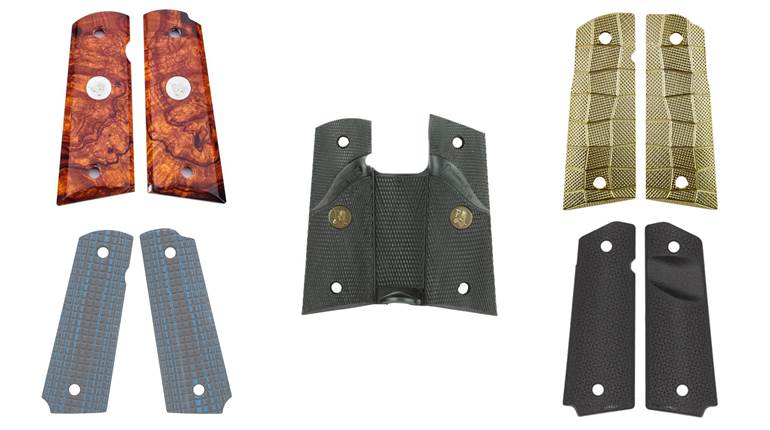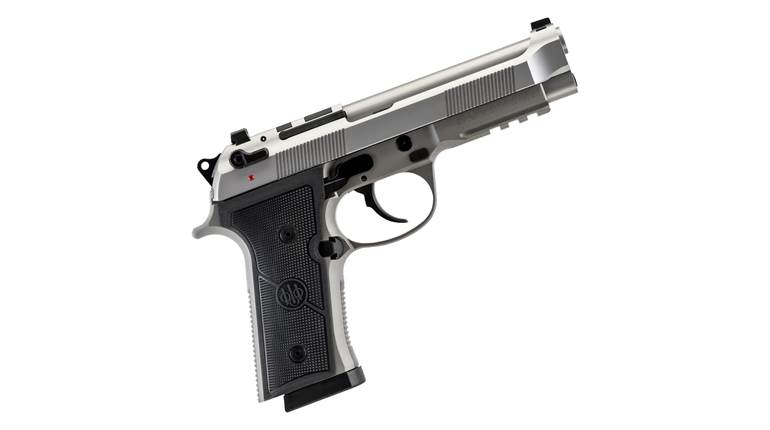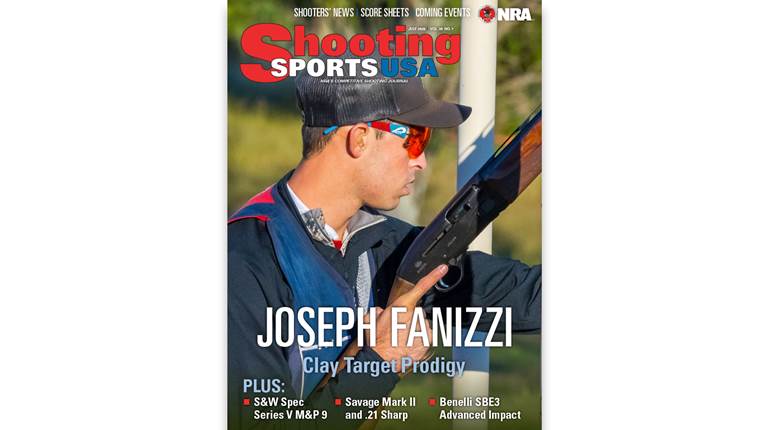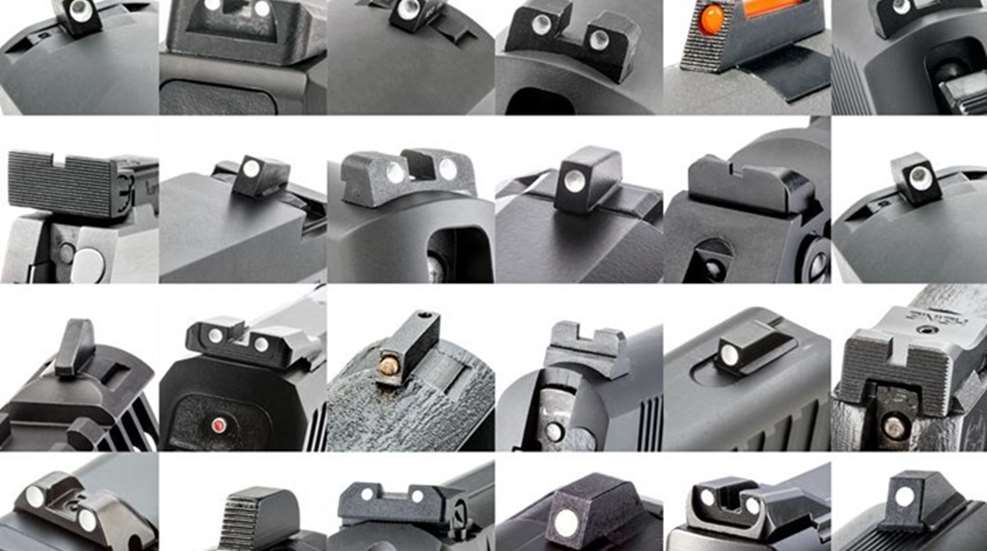
A long time ago, I was privileged to handle an original Colt Paterson revolver. As you may recall, this was the first American revolver—a legendary arm that saw wide use in frontier conflict. The Paterson principle of multiple chambers rotating into alignment with the barrel proved itself over and over again. The original maker of this arm is still making guns on this principle. When I examined that much used sample, I was sternly advised not to work the action. This was in deference to the aging lockwork of a century-old handgun. I recall that there was a tiny little front sight, but no visible rear sight. Colt revolvers at the time used a slight notch on the tip of a (cocked) hammer for a rear sight.
Hindsight's always 20/20, but it seems as though the handgunners of the olden days should have realized that the sighting system on their guns was hopelessly inadequate. Possibly, they viewed the sights as little more than an aid to pointing the gun. Since the idea of accuracy as an important factor in a repeating handgun was yet to be established, they just didn't worry about it. Modern shooting of the older guns—with careful attention to every aspect of loading—has established that there is a good bit of accuracy in the old thumbusters.
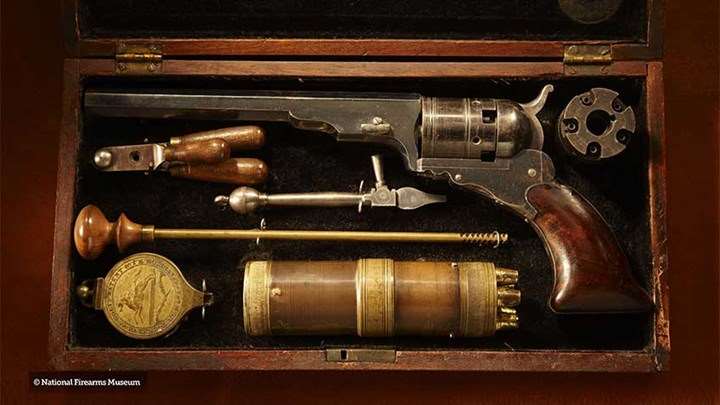
A highly regarded sixgun of the Civil War was the 1860 Army, a powerful revolver from Col. Colt's Hartford plant. Like all Civil-War-era and earlier revolvers, the gun had an open top frame. This system does not include a so-called “topstrap," where other makers cut a long, trough-like groove to serve as a rear sight. The '60 Army does have a substantial front sight. As a rule, revolvers of these early decades use front sights designed to not get in the way more than to further handgun marksmanship.
But the year 1873 saw the introduction of the venerable Single Action Army revolver from Colt, a firearm in use for decades. The Peacemaker had a topstrap with a sighting notch and a fairly prominent front sight. Also, other makers—Remington, Merwin Hulbert and Smith & Wesson—competed with good revolvers with similar sights.
Elsewhere in the world, a number of different makers developed big service wheelguns. This is significant in that international competition with handguns became a reality by the end of the century. As it always seems to happen, the competition drives the development of better equipment. That included better guns and markedly better sights on those guns.
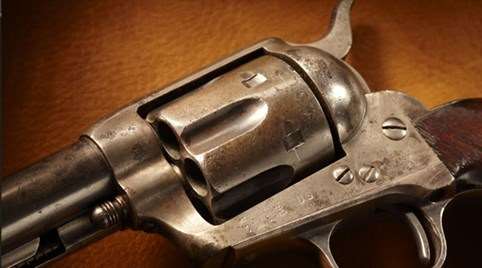
For some inexplicable reason, the competition shooter of the turn of the century often looked at a bead front sight that was even smaller than sights of the Civil War period. It was a round bead (ivory, silver or more commonly, gold) on a very slim post. Usually, the rear sight was a “U” shape. Precise, fully adjustable sights were not seen for decades. When the self-loading pistols of Browning, Luger and Mauser were introduced, their sights were “U” rear with an unobtrusive, narrow blade front.
Even the legendary 1911 pistol from Colt had this type of sighting system. At the time of the 1911's introduction, there was also worldwide interest in compact semi-autos in .22, .25, 32 and .380 calibers. Some of these guns were amazingly small and all of them had tiny sights.
Sporting use of the handgun expanded as the 20th century wore on. By mid-century, interest in pistol sports was developing well beyond the grand old bullseye game. We started shooting at silhouette targets, steel animals and even bowling pins. More to the point of the pistol's original purpose, we began to work from something other than nice flat, straight firing lines. Police and military training moved more toward reality. In the period since the end of WWII, there has been a veritable explosion of development in handgun sights.
Most of it stems from the obvious need to get greater accuracy from the gun and its ammo—which were also improving. Another was a perceived need for sights that permitted shooting faster. The trend in guns and ammunition was towards defensive or combat shooting. Col. Jeff Cooper of Gunsite Academy was stirring up all kinds of interest in this type of work, drawing police, military and civilian handgunners to his new shooting school in Arizona. He once wrote that the only modifications a 1911 .45 really needed were a decent trigger and “...sights you can see.”
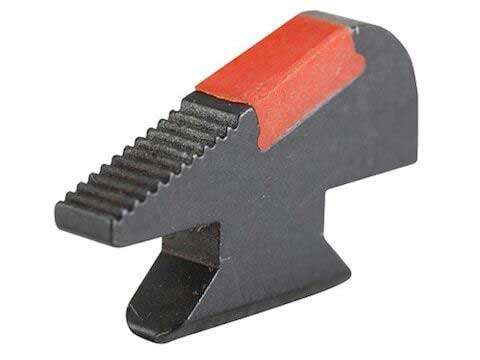
By the early 1950s, S&W fitted a great many of its wheelguns with fully adjustable rear sights mated up to ramp front sights. The ramp front sight was an eighth inch wide and so was the rear notch. This gave the shooter a large, easy-to-see sight alignment. In the absence of other big, adjustable sights, many of these S&Ws made their way onto 1911 Colts.
Something else began to appear: various kinds of dots or lines of contrasting color. These things were intended to make marksmanship easier for a defensive shooter who must deliver fast, accurate shots. Other makers followed S&W's lead with red ramp front, white outline rear. It was a virtual standard for serious handguns. Other colors out front came along fairly often—I had a yellow ramp front sight on my model 19 for a while.
Eventually, the gunmakers came up with glow-in-the dark sights of various types. They varied in their effectiveness, but some worked pretty well. I had a bar-dot system on a Commander, and it was effective. The luminous bar was just under the rear sight notch and a somewhat brighter dot was on the rear of the front sight.
Laser sights also came into being and were initially too bulky to be practical. The concept of putting the red dot where you want to hit and then touching one off is so appealing that the engineers made them smaller. I do not believe the laser problem—the absolute need for perfect ambient light conditions—has ever been completely solved. Some weaponlights are really small but throw a powerful beam of light downrange. But remember, they exist to help you identify the target and do not serve as a sighting system.
As this is written, we are witnessing a strong surge of interest in the red-dot sights that project an aiming red dot onto a transparent screen. Once again, the engineers have really done their job. I have seen some well-informed shooters using them. My own experience is limited, so I cannot say much about them. Time will tell.
In the past few years, I have been having good results from a traditional sighting system with slight modification. I use an eighth-inch Patridge-style post with a McGivern gold bead front sight. The rear sight notch is extra, extra wide at .170” as opposed to the standard .125”. The wide notch means plenty of light showing on each side of the front sight. For me and many other shooters, the bigger sighting notch is much easier to see.
When it comes to sights on my personal guns, I am stuck with tradition and what I am used to. That's traditional iron sights that differ from what was used on the early guns, but only in size. If you desire some kind of doodad on your sights, try and keep the addition only on the front sight. If you put bars, dots, circles, squares or triangles on or around your rear sight, your attention will be tempted away from the front sight and you will miss.












